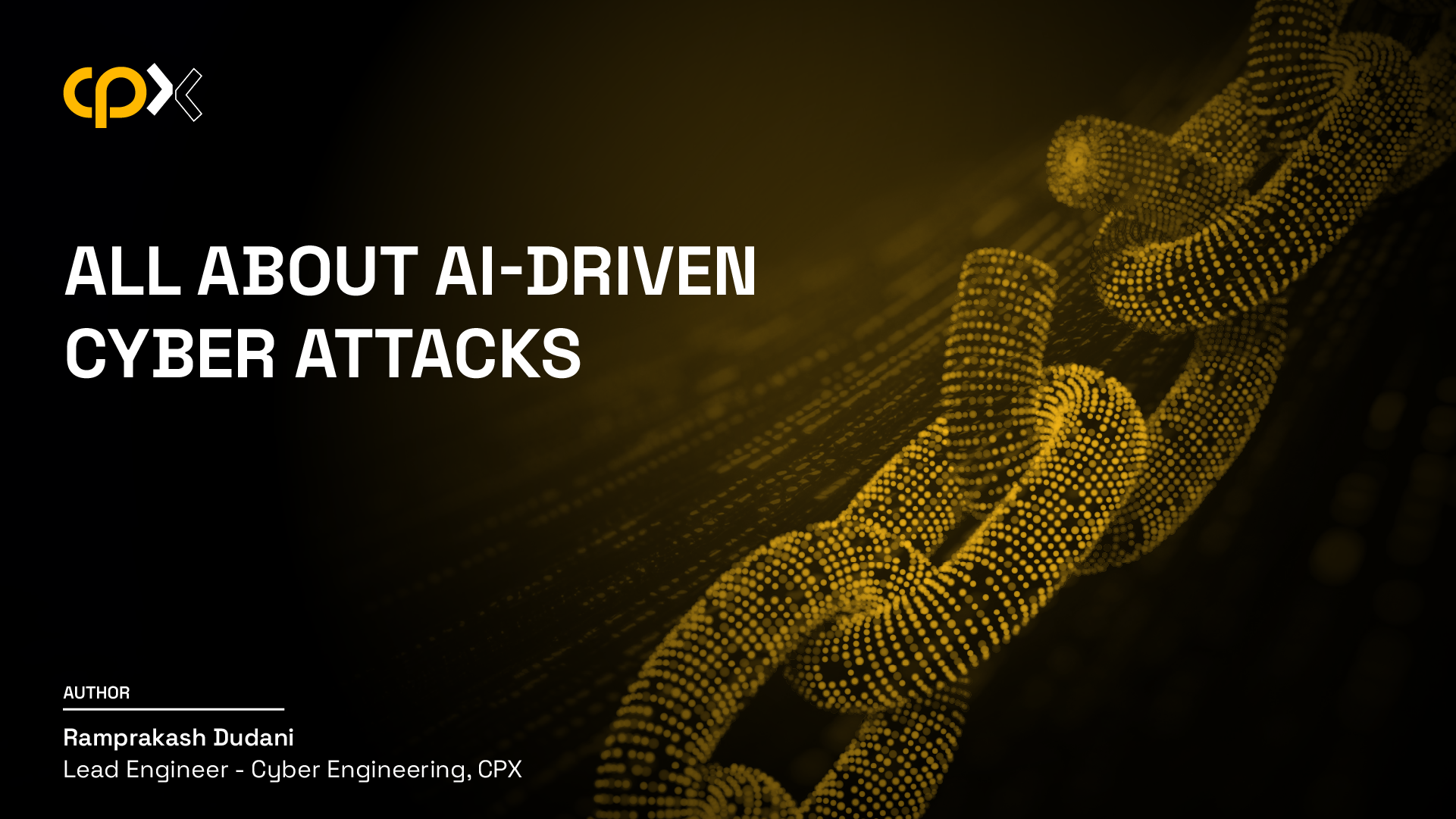
The rapid advancement of artificial intelligence (AI) has transformed various industries, including cybersecurity. While this transformative technology provides enhanced security measures, it has also been weaponized by cybercriminals to launch sophisticated cyber attacks.
AI-driven cyber attacks pose significant threats to organizations, governments, and individuals, making it crucial to understand their mechanisms, impact and potential countermeasures.
This article explores AI-powered cyber threats, real-world examples, and the measures needed to mitigate them.
Understanding AI-driven cyber attacks
AI-Driven cyber attacks leverage machine learning (ML) and automation to conduct malicious activities. Traditional cyber Attacks rely on predefined scripts and manual execution, whereas AI-driven attacks can adapt, learn, and evolve. Cyber criminals use AI to enhance attack efficiency, evade detection, and exploit vulnerabilities more effectively.
Key characteristics of AI-driven cyber attacks are:
- Automated threats: AI enables the automation of cyber attacks, allowing cybercriminals to conduct large scale operations with minimal human intervention.
- Adaptive malware: AI-driven malware can modify it self dynamically to evade detection by traditional security systems.
- Deepfake-based attacks: AI can generate convincing deepfake videos, images and voices for identity theft and misinformation.
- AI-enhanced phishing: AI can create highly personalized phishing emails that are difficult to recognize from legitimate messages.
- Exploitation of AI systems: Hackers can manipulate AI models by poisoning training data or exploiting weaknesses in AI algorithms.
Examples of AI-driven cyber attacks
From deepfakes to adaptive malware, cyber threats are entering a new era. Here are a few examples of AI-assisted cyber attacks:
- Deepfake social engineering: Deepfake technology, powered by AI, is being used to impersonate executives, politicians, and celebrities. In 2019, cybercriminals used deepfake voice technology to impersonate a CEO and trick an employee into transferring $243,000 to a fraudulent account. Such attacks demonstrate how AI can manipulate trust and deception at an unprecedented scale.
- AI-powered phishing attacks: Traditional phishing emails are often generic and poorly written, making them easier to spot. AI, however, can analyze social media profiles, emails, and communication patterns to craft highly personalized phishing messages. Attackers use AI chatbots and Natural Language Processing (NLP) to make these emails more convincing, increasing the likelihood of successful breaches.
- AI-enhanced malware and ransomware: Cybercriminals are using AI to create self-learning malware that adapts to security measures. AI-powered ransomware can analyze a victim’s system, identify valuable files, and optimize encryption strategies to maximize damage. Emotet, TrickBot, and Ryuk are examples of malware that have incorporated AI-like features for improved attack precision.
- Adversarial machine learning attacks: Hackers can manipulate AI models through adversarial machine learning techniques. By injecting manipulated data into training models, attackers can distort AI predictions. This technique is particularly dangerous in areas like fraud detection, autonomous vehicles, and facial recognition systems.
- Botnets and automated attacks: AI-driven botnets can autonomously scan the internet for vulnerabilities and launch large-scale Distributed Denial-of-Service (DDoS) attacks. AI-enhanced bots can also mimic human behavior to bypass security measures like CAPTCHA and Two-factor Authentication (2FA).
Impact of AI-driven cyber attacks
- Financial losses: Businesses and individuals suffer significant financial damages due to AI-powered cyber attacks. Ransomware, fraud, and phishing schemes cost companies millions of dollars in direct and indirect losses.
- National security threats: Governments are increasingly concerned about AI-driven cyber attacks targeting critical infrastructure, defense systems, and political campaigns. Deepfake technology can be used for disinformation campaigns, leading to geopolitical instability.
- Compromised privacy and identity theft: AI can automate identity theft by generating realistic fake identities, stealing credentials, and bypassing biometric authentication systems. This puts personal data, financial records, and confidential information at risk.
- Erosion of trust in digital communication: With the rise of deepfake videos and AI-generated content, distinguishing between authentic and manipulated media is becoming difficult. This threatens trust in news, social media, and digital transactions.
Countermeasures against AI-driven cyber attacks
- AI-based cybersecurity solutions: Organizations must adopt AI-powered cybersecurity tools to detect and prevent AI-driven threats. Machine learning algorithms can analyze behavioral patterns, detect anomalies, and respond to threats in real time.
- Zero trust security model: The Zero Trust security model ensures that no entity—whether inside or outside an organization—is trusted by default. This approach involves strict access controls, multi-factor authentication, and continuous monitoring.
- Threat intelligence and information sharing: Governments, businesses, and cybersecurity experts must collaborate to share intelligence on emerging AI threats. Information-sharing initiatives like MITRE ATT&CK help organizations understand attack patterns and improve defenses.
- Cyber hygiene and employee training: Educating employees about AI-driven phishing, social engineering, and deepfake scams is crucial. Regular security awareness training can reduce human errors and enhance an organization's resilience against AI-powered attacks.
- Regulatory frameworks and AI governance: Governments and regulatory bodies must establish laws and ethical guidelines for AI usage. AI security policies should address responsible AI development, data protection, and legal consequences for AI-powered cybercrime.
- Robust AI model defense mechanisms: To counter adversarial machine learning attacks, organizations must implement robust AI model defenses. Techniques like adversarial training, differential privacy, and anomaly detection can help protect AI systems from manipulation.
Conclusion
AI-driven cyber attacks are a growing concern in the digital landscape. While AI enhances cybersecurity defenses, its misuse by cybercriminals poses significant risks. Understanding AI-powered threats, adopting advanced security measures, and fostering global cooperation are essential in mitigating the dangers posed by AI-driven cyber attacks.
Organizations and individuals must stay vigilant, invest in AI-based security solutions, and prioritize cybersecurity awareness to safeguard against this evolving threat. As AI technology continues to advance, cybersecurity strategies must evolve accordingly to ensure a secure digital future.
At CPX, our cybersecurity solutions are built with cutting-edge AI and analytics at their core—enabling real-time threat detection, intelligent response, and proactive resilience-building across your organization.
From securing digital infrastructure to helping clients stay ahead of emerging threats, we harness the power of AI to shape strategies that protect what matters most.
Want to know how to build AI resilience in your organization? Talk to our experts at ContactUs@cpx.net.
